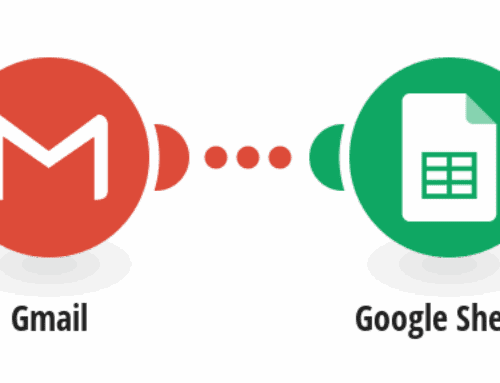Migrating AWS S3 Files to Google Cloud Storage: A Comprehensive Guide
Introduction to Cloud Storage Migration
In today’s fast-paced digital world, businesses are increasingly relying on cloud storage solutions for managing their vast amounts of data. However, with the plethora of options available, deciding to switch or migrate between services like AWS S3 and Google Cloud Storage can be daunting.
This guide aims to simplify the process of migrating AWS S3 files to Google Cloud Storage. Whether you’re seeking better pricing, enhanced features, or simply consolidating services, understanding the migration process can save you time and resources.
Understanding AWS S3 and Google Cloud Storage
What is AWS S3?
AWS S3, or Amazon Simple Storage Service, is a scalable object storage service renowned for its long-standing reliability and security. It is designed to handle any amount of data from anywhere on the web, making it an ideal choice for many organizations.
With AWS S3’s pay-as-you-go model, businesses can manage their storage needs without upfront investment, ensuring cost-effectiveness. Its durability and availability features make it a top contender in the cloud storage market.
Introducing Google Cloud Storage
Google Cloud Storage offers a secure and highly durable object storage service. Known for its seamless integration with other Google services, it stands out due to its advanced data analytics capabilities and competitive pricing models.
If you already leverage Google’s ecosystem, transitioning to Google Cloud Storage might enhance efficiency and interoperability across your cloud solutions, providing a cohesive environment for your data management tasks.
Reasons to Migrate to Google Cloud Storage
Enhanced Features and Cost Efficiency
One major reason businesses consider migrating is the allure of better features at a lower cost. Google Cloud Storage often presents a more attractive pricing structure for those heavily invested in analytics and big data management.
The flexibility offered by Google’s pricing tiers can significantly reduce expenditure on dormant or seldom-accessed files, providing a tailored solution for various business needs.
Improved Integration and Ecosystem
If your operations already rely on Google’s extensive suite of tools, migrating to Google Cloud Storage can streamline processes. Its integration capabilities offer a smoother transition and enhanced usability across platforms.
This harmonization leads to improved productivity, as users experience less friction when accessing and analyzing data within a unified system.
Preparing for the Migration Process
Assessing Your Data Needs
Before embarking on your migration journey, a thorough assessment of your current data landscape is imperative. Consider factors such as data volume, access frequency, and security requirements.
This audit will help determine the most efficient migration strategy, ensuring that no critical data is left behind and potential disruptions to your operations are minimized.
Choosing the Right Tools and Services
There are several tools designed to facilitate the migration process from AWS S3 to Google Cloud Storage. Selecting the right combination of tools can greatly reduce complexity and ensure a successful transfer.
From Google’s Transfer Service for on-premise data to third-party offerings, evaluating tool capabilities against your specific needs is crucial in streamlining operations.
Step-by-Step Migration Process
Configuring Access and Permissions
To initiate the migration, you’ll need to configure permissions appropriately on both AWS and Google Cloud platforms. This involves setting up roles and access keys to enable seamless communication between the two services.
Ensuring that permissions are correctly configured minimizes the risk of unauthorized data access and enhances the security of the data transfer process.
Executing the Data Transfer
With configurations in place, initiating the data transfer can begin. Utilizing tools such as gsutil or the Google Transfer Service, you can systematically move your data from AWS S3 to Google Cloud Storage.
During this phase, monitoring is key. Keep an eye on the transfer process to address any issues that arise promptly, ensuring data integrity is maintained throughout.
Post-Migration Considerations
Verifying Data Integrity
After completing the migration, verifying data integrity is crucial. Conduct checks to ensure all files have been transferred accurately without corruption or loss.
Compare file sizes and hashes between the source and destination to confirm the migration’s success, providing peace of mind and data reliability for future operations.
Optimizing Storage and Usage
Once your data resides in Google Cloud Storage, explore opportunities to optimize usage. Leverage Google’s analytics tools to better understand your data patterns and storage needs.
These insights can lead to further cost savings and performance improvements, allowing your business to thrive in the cloud environment.
Conclusion
Migrating from AWS S3 to Google Cloud Storage can unlock a multitude of benefits for businesses seeking efficiency, cost savings, and better integration with Google’s ecosystem. By following a structured approach, companies can ensure a smooth transition with minimal disruption.
As technology continues to evolve, staying adaptable and informed empowers businesses to harness the full potential of cloud storage solutions.
FAQs
How long does the migration process take?
The duration varies based on data volume, network speed, and chosen tools. Smaller data sets can take a few hours, while larger migrations may span several days.
Are there any costs associated with migrating between these services?
Yes, costs can include data transfer fees from AWS and potential charges for using certain Google Cloud tools. It’s essential to budget accordingly.
Can I automate the migration process?
Yes, automation tools exist to streamline migration. Utilizing scripts and APIs can minimize manual intervention and improve efficiency.
What if I encounter data loss during migration?
Regular backups are advisable before migration. If issues arise, troubleshooting guides and support from service providers can assist in data recovery.
Is technical support available during the migration process?
Both AWS and Google offer support services. Engaging with their support teams can address technical challenges and ensure a successful migration.










